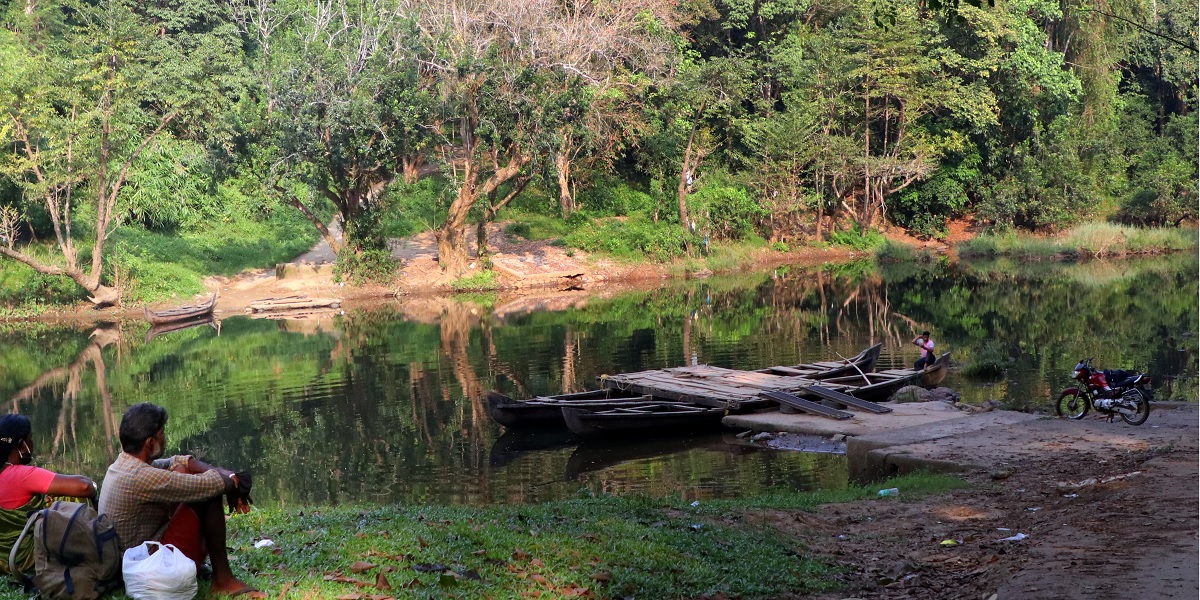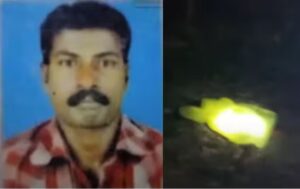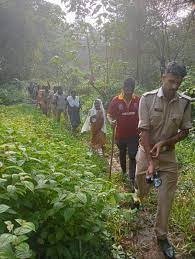Mainstream media has labelled Kuttampuzha a "ghost village," claiming a mass exodus of residents driven by fear of wild animal attacks. However, this name has brought fear and confusion, damaging the lives of the people who live here.
Published Jan 16, 2025 | 9:00 AM ⚊ Updated Jan 16, 2025 | 9:00 AM

Media reports about wildlife threats are making the village seem unsafe and affecting the residents' lives.
Tucked away in the heart of the Western Ghats in Kerala, Kuttampuzha is a village like no other. Surrounded by thick forests and brimming with wildlife, it feels like a piece of untouched paradise. Once part of the Idukki district, it is now a part of the Ernakulam district and falls under the Kothamangalam Assembly Constituency.
Kuttampuzha is home to a significant tribal population, including the Mannan, Muthuvan, Ulladan, Malayarayan, Malayan, and Urali communities. For nature lovers, this place is a treasure; for its people, it’s home — a place where life is simple and connected to the forest.
Lately, a shadow has fallen over this peaceful village. Mainstream media has labelled Kuttampuzha a “ghost village,” claiming a mass exodus of residents driven by fear of wild animal attacks.
However, this name has brought fear and confusion, damaging the lives of the people who live here. With this beautiful village earning this haunting title, the constant media glare turned the lives of the residents upside down.
Kerala has recently witnessed a series of wild elephant attacks that have escalated tensions and led to significant political developments. The resignation of PV Anvar MLA is one of the notable outcomes.
On 16 December 2024, a 45-year-old man, Eldhose, lost his life at Urulanthanni in Kuttampuzha following an elephant attack, triggering widespread outrage.

Eldhose
On 14 December, Ann Mary C, a 21-year-old engineering student, tragically died after a large tree branch fell on her head.
The branch was reportedly uprooted by an elephant at Chembankuzhy in the Kavalangad panchayat of Kothamangalam.
Earlier, on 28 November 2024, three women who ventured into the forest at Attikalam near Kuttampuzha in search of a missing cow were stranded overnight in fear of elephants.
Rescued the next day, they recounted how they felt the presence of the animals while perched atop an elevated rock for safety.

Three women who were trapped in the forest rescued after 14 hours.
There were also protests in Kothamangalam town on 4 March 2024, after the death of a woman following a wild elephant attack, marking another instance of rising human-wildlife conflict.
The area had already witnessed a similar tragedy when Santhosh (48) was killed by a tusker in the Pinavoorkudy tribal settlement in June 2022.
After the increased instances of human-wildlife conflicts, the community’s demands for safety measures gained momentum, leading to the restoration of solar fencing along forest borders and the installation of streetlights. The move was a result of massive protests and continuous media coverage.
However, Kuttampuzha Panchayat President Kanthi Vellakayyan told South First that media reports portraying the area as unsafe and abandoned due to wildlife threats are adversely affecting the lives of residents.
According to her, continuous media coverage is both a blessing and a curse for the village.
Benny, a resident of Pooyamkutty near Kuttampuzha, told South First, “Our fight is not against wild animals, but with the authorities who ignored our struggles until a tragedy occurred. After the tragic death of Santhosh in 2022, the authorities promised to construct a trench, but it wasn’t until Eldhos’s death that they took any action. Only then did the construction of the trench begin.”
“It is true that some families have left their homes, they haven’t moved to other panchayats or parts of the district. They still live within Kuttampuzha itself. What we need is proper fencing, trenches, and a comprehensive action plan to address wildlife attacks on lives and crops. Only then will people stay in their land. No one wants to leave their dream home and land,” he added.
In 2009, 96 families from eight settlements near Kandanpara abandoned forest land due to wild elephant threats, seeking relocation.
The Kerala High Court directed the allocation of 523 acres in Panthapra in 2014 for 218 families, with 87 acres reserved for common facilities. A 2015 package offered two acres and ₹10 lakh for construction, but 151 families remained in the forest. In 2023, 79 families from the Kuttampuzha forest relocated to Panthapra.
Over the past five years, more than 40 families have abandoned their homes, driven largely by crop destructions by elephant herds. While wildlife attacks have been a major factor, there are several other reasons behind this exodus, as noted by Panchayat President Kanthi Vellakayyan.
The situation cannot be attributed solely to wildlife conflicts, as other contributing factors also play a significant role.

PHC, Kuttampuzha
Imagine walking through a forest, relying solely on the dim light of your mobile phone’s torch, along a path where wild elephants, wild boars, gaur, and sambar deer could appear at any moment.
This is the reality for most villagers in Urulanthanny of Kuttampuzha.
Their safety concerns are often only addressed after a tragedy, like the one that befell Eldhose. It’s not just midnight when the danger is high — after 6.30 pm, even the bus routes fall silent, leaving the villagers to navigate the perilous darkness alone.
Kuttampuzha Panchayat member PP Joshy, representing the ward where Eldhose was killed, told South First, “All the wards in this panchayat are situated on the outskirts of the forest. Around 60 families live near the area where the elephant killed Eldhose. If someone falls ill, they have to spend thousands for jeep transportation.”
On 12 March 2024, Vigil PN, an autorickshaw driver, tragically died after his vehicle collided with a sambar deer and overturned in Kuttampuzha. He was rushed to a private hospital in Aluva.
This incident has once again highlighted the long-standing demand from the largely tribal population of the panchayat for a 24/7 healthcare facility, as the Primary Health Centre (PHC) does not have advanced healthcare options during emergencies.
“The poor healthcare facility in Kuttampuzha isn’t the fault of wild animals but of the authorities,” Benny remarked. “Would you live in a place without basic facilities?” he questioned.
Sheela Rajeev, a panchayat representative from Kuttampuzha, told South First that wild animal attacks, particularly by elephants, have significantly impacted the local population.
“In Kuttampuzha, most of the wards are surrounded by forest, especially Ward 12 and Ward 6. Last month, two deaths occurred in Ward 12 due to an elephant attack. Forest officials, especially the Rapid Response Team (RRT), have been very cooperative. They respond promptly whenever alerted about elephant sightings, regardless of the time,” she said.
Sheela also highlighted the plight of the tribal communities residing in the wildlife-dense areas.
“These wards, which face a higher density of wildlife, are mostly inhabited by tribal people. Many have left their hamlets and relocated near the town for safety,” she said.
However, the basic facilities available to them are inadequate, and they are struggling to earn a living in these new settlements,” she added.
Panchayat President Kanthy commented on the changes in the region, stating that while their ancestors lived peacefully and relied on agriculture for their livelihood, overcoming conflicts with wildlife, today’s younger generation is more educated and holds white-collar jobs.
Many have moved abroad, while others have bought land near towns and shifted away from areas close to the forest, even within the same panchayat.
She acknowledged that it is natural for people to seek better facilities when they can afford them, noting that this shift has also occurred in Kuttampuzha.
However, she criticised media narratives that solely blame wildlife conflicts for these changes. Kanthy emphasised that the negative impact of these narratives is particularly affecting the youth, who are struggling, even facing challenges in finding marriage proposals due to their residence in Kuttampuzha.
Tourism has also been impacted, with a decrease in the number of visitors to the local homestays and hotels. Despite these challenges, she expressed the community’s determination to fight against these misleading perceptions, asserting that people still live in the area and that future generations need to continue living there.
“This is not an abandoned land,” she firmly stated.
Speaking to South First, Binesh Narayanan, the ward representative of Pinavoorkudy, surrounded by dense forests in Kuttampuzha, raised serious concerns about the land value in the region.
Currently, land prices in the area range from ₹45,000 to ₹50,000 per cent. He emphasised that if the media continues to portray the Panchayat in a negative light, the land value could significantly drop.
Drawing comparisons with countries like Australia, where there are effective measures to control wildlife, Binesh stressed that a similar balance is missing here.
He also highlighted that wildlife attacks are happening in Wayanad as well, but questioned why the media doesn’t portray a single village in Wayanad in the same light. Kuttampuzha has been given an unfair share of misfortune and struggles to overcome the labelling of abandoned land.
(Edited by Muhammed Fazil.)
